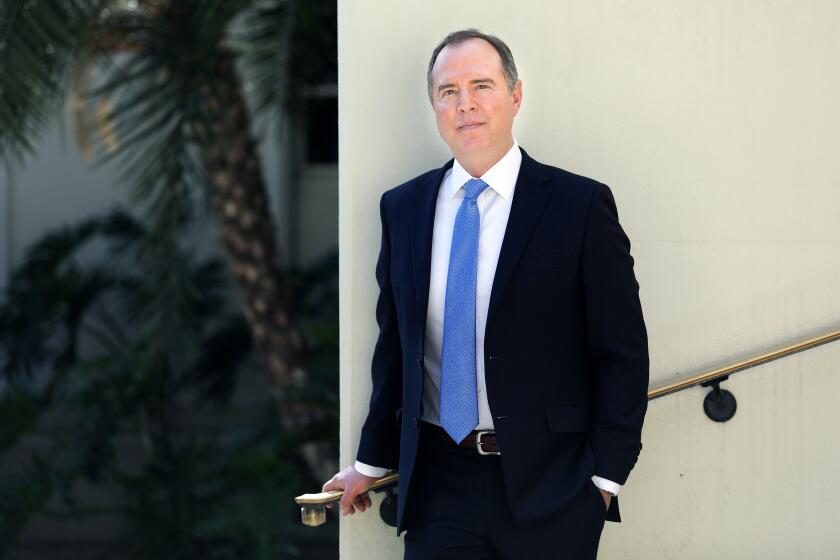Jerry Brown nearly matched Meg Whitman’s campaign spending on TV in final weeks of race
- Share via
Meg Whitman vastly outspent Jerry Brown on virtually every facet of the 2010 contest for governor. From focus groups and consultants to private planes and lavish fundraisers, Whitman campaigned like the billionaire she is, spending $177 million to Brown’s $36 million.
But in one key area — television advertising — the Democrat nearly kept pace with Whitman during the final sprint of the campaign, allowing him to make his case to voters before they cast ballots, according to financial disclosure reports filed Monday.
“By holding our fire, we were competitive in the final month and almost equal in the final four weeks,” Brown’s campaign manager, Steve Glazer, said.
Rob Stutzman, a former Whitman strategist, said the two candidates’ spending cannot be directly compared, in part because of Brown’s long relationship with California voters. “Brown entered the race with $100 million of name ID,” he said.
Monday’s final spending numbers confirmed the narrative that defined the race between Whitman, the Republican nominee, and Brown, who won the November election by 13 points. The former EBay chief shattered records for spending in a nonpresidential race and set a new national precedent for self-financed candidates, ultimately donating $144 million of her own money to her campaign. Whitman’s net worth has been estimated at $1.2 billion by Forbes magazine.
At the opposite end of the spectrum, Brown ran a lean and austere effort, his frugality driven by his campaign’s financial realities and his personal fiscal reserve.
Whitman’s wealth often allowed her to outpace her rival many times over. The Republican’s camp, for example, spent 18 times more money on fundraising events at tony locations from coast to coast, including the Ritz-Carlton in New York and The Lodge at Torrey Pines in La Jolla. To her $1.3 million in fundraising event costs, Brown spent $72,000.
Yet on the strength of a fan base honed by four decades in elected office, Brown actually outraised Whitman if the candidates’ donations to their own campaigns are discounted — $40.4 million to $32.4 million.
Perhaps the most striking contrast came in payments to the roster of consultants and aides on the two teams. Whitman’s campaign was notoriously top-heavy; she ultimately paid consultants more than $13.1 million, while Brown paid a half a million dollars to his top advisors.
Before political consultant Mike Murphy even joined her campaign, Whitman invested $1 million in a movie company he owned. After he signed on to her effort, she paid a Murphy company, Bonaparte Films, $90,000 in most months. By Election Day, his monthly payments totaled $1.3 million. Scott Howell & Co., a nationally known Dallas-based company that created some of Whitman’s ads, was paid more than $2 million.
Whitman was able to spend $1.7 million on polling and surveys, about 11 times more than Brown’s team.
Beyond the key consultants, the scores of aides who comprised Whitman’s sprawling campaign operation were paid $6.8 million. Brown’s campaign spent $312,000 on salaries. (During a recent panel at UC Berkeley, Glazer, the Democrat’s campaign manager, said the team had 50 full-time staffers in the final stretch, but just over a dozen were paid.) The governor doled out $42,500 in bonuses the day after the election to his aides and volunteers, generally in $1,000 increments; Whitman’s report did not itemize bonuses.
Whitman’s considerable resources allowed her and her staff to fly by private jet; they spent $2.6 million for travel, lodging and meals. Brown and his aides flew Southwest Airlines, spending about $70,000 on airfare, car rentals and other travel expenses.
The former business executive also spared no expense in staging campaign rallies. Her lavishly produced events featured dramatic backdrops and state-of-the-art lighting and sound, more akin to what voters are accustomed to seeing in the final months of a presidential campaign. She spent at least $2.7 million on those events.
Brown’s events — when he had them — rarely boasted more than a lectern, a microphone and a handful of “Brown for Governor” signs taped up by volunteers. Their simplicity was reflected in the reports: He spent just over $70,000 staging his events, $5,700 for signs and about $2,200 for food for supporters and volunteers. A notable splurge was a $1,000 payment for a band at his very last campaign event, the night before the election in Oakland.
As is customary in California campaigns, both candidates poured the bulk of their money into communicating with voters through television and radio advertisements. Whitman spent more than $120 million — two-thirds of her campaign treasury — producing and airing commercials. Brown spent for that purpose nearly three-quarters of the $40 million he raised. Between Sept. 1and Election Day, Whitman spent $40 million buying airtime to Brown’s $29 million. But much of Brown’s spending occurred in the final month, allowing him to maximize his efforts precisely when voters were preparing to cast ballots.
The reports underscored the strategic advantage enjoyed by Brown because he, unlike Whitman, had no significant primary opposition. Although Whitman spent about three times more than Brown on campaign mailings overall, more than half her mail spending came during her hard-fought primary race against then-California Insurance Commissioner Steve Poizner. In the general election, Whitman spent only about $600,000 more than Brown’s $4.2 million on direct mail. The former EBay chief executive spent another $660,000 on campaign paraphernalia handed out at her events, including her glossy 48-page policy booklet and lime green “MEGaWomen” T-shirts. Brown spent $92,700 on those costs.
More to Read
Get the L.A. Times Politics newsletter
Deeply reported insights into legislation, politics and policy from Sacramento, Washington and beyond. In your inbox three times per week.
You may occasionally receive promotional content from the Los Angeles Times.












